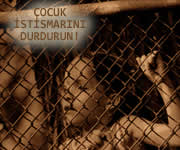 Last week our postman rang the bell. Not twice, but once. Because I was so eager to get my book and did not keep him waiting. He brought my new book ,Suleymanname.
Last week our postman rang the bell. Not twice, but once. Because I was so eager to get my book and did not keep him waiting. He brought my new book ,Suleymanname.Suleymanname is about the conquests of Suleyman the Magnificent.
The full name of the book is "Tarih-i Feth-i Siklosh, Estergon ve Istol[n]i-Belgrad". It is written by Sinan Cavush. We don't know so much about Sinan Cavush though at least we know that he is the author of an another book, "Gazavat-i Hayreddin Pasha [The Holy Campaigns of Barbarossa]" . The powerful narrative style of Sinan Cavush was very popular among his readers. The anecdotes he told in his books which were related by story-tellers and listened to with great interest especially in the Ottoman Coffee houses and sometimes became the subjects of many other books.
F
 our written copies of Suleymanname survived till today. The book I have is the facsimile of the manuscript kept in the Topkapi Palace Museum Library[no:1608]. It has 146 folios, contains 4 maps and has 32 miniatures. You can see the Constantinople miniature on the left.
our written copies of Suleymanname survived till today. The book I have is the facsimile of the manuscript kept in the Topkapi Palace Museum Library[no:1608]. It has 146 folios, contains 4 maps and has 32 miniatures. You can see the Constantinople miniature on the left.The story of the book goes like this:
After Suleyman succeeded to the throne, there were no threat from east left.The year following his accession to the throne,he attacked Belgrade. It was year 1521 , he captured Belgrade after some struggle.After he attacked and annexed Hungary after the Battle of Mohacs on 29th of Agust 1526.
 The events written in the book are the events happened after the Battle of Mohacs. The Austrian Archduke Ferdinand attacked Budin[Buda]. They captured Peste on 27th of August 1542. Peste is across of Buda and they form Budapest of modern times. Ferdinand put 32 cannon and started to pound Buda. As you can imagine, Suleyman did not wait so long to declare war. The section about the archduke is given on the left.
The events written in the book are the events happened after the Battle of Mohacs. The Austrian Archduke Ferdinand attacked Budin[Buda]. They captured Peste on 27th of August 1542. Peste is across of Buda and they form Budapest of modern times. Ferdinand put 32 cannon and started to pound Buda. As you can imagine, Suleyman did not wait so long to declare war. The section about the archduke is given on the left.When Suleyman reached Belgrade, enemy forced immediately fled. Suleyman began to prepare for the avenge of Buda.
In the meantime, an envoy sent by the French king requested the Sultan to send Barbarossa to help him. The king of Spain and Germany had attacked the French king and thrown him into prison.Sultan sent Barbarossa for the help.
Barbarossa and his men captured the outer fortress of Nice in 19 days. In retaliation against the violent siege, the commender of the fortress made a secret pact with the French ambassador to surrender the fortress if the Ottoman fleet departed. French ambassador talked to Barbarossa and said him that he has to end the siege because the fortress had been handed over to the French. Barbarossa lifted the siege immediately but the enemy did not keep their word, they did not surrender. After that, French ambassador sought help from the Ottoman Navy for the attack. Barbarossa attacked Nice again, heavily bombarded the city but the stormy season was approaching. Barbarossa returned to the island Santa Margarite for winter.
 The book also tells the stories of how Estergon, Valpo and Shiklosh conquered. I cannot write really all of the things that are being told in the book as it is a really thick one. But I might let you enjoy the beautiful miniatures!
The book also tells the stories of how Estergon, Valpo and Shiklosh conquered. I cannot write really all of the things that are being told in the book as it is a really thick one. But I might let you enjoy the beautiful miniatures!


























